The Arctic Cooling Liquid Freezer II 240 & 420 AIO Coolers Review: Big and Effective
by E. Fylladitakis on January 15, 2021 8:15 AM EST- Posted in
- Cases/Cooling/PSUs
- Corsair
- Water Cooling
- Liquid Cooling
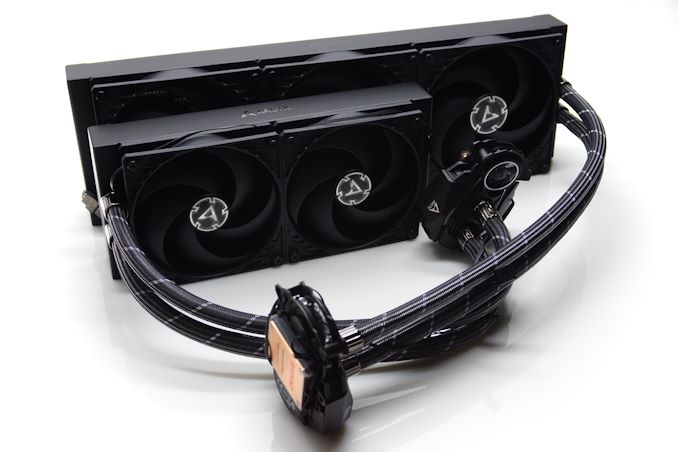
Arctic Cooling is a company originating from Switzerland and has risen to prominence for their advanced cooling solutions. The company was founded back in 2001 and offered some of the best thermal compounds available at the time. Today, cooling products remain the core focus of the company, but they also offer a few other products as well, such as advanced monitor mounts and audio peripherals.
Over the past several months, Arctic Cooling has been picking up from a dry spell in top-tier CPU coolers, having gone a few years since their previous release. Last year, the company introduced the first parts in their their Liquid Freezer II all-in-one liquid cooling series, expanding the range as the months went by. A few weeks ago the company announced the release of the massive Liquid Freezer II 420, triple-fan AIO cooler that holds not three 120mm fans – as is usually the case with triple-fan coolers – but three even larger 140 mm fans. Arctic Cooling set out to cover the market from bottom to top with their Liquid Freezer II coolers, and the introduction of a 420mm design has certainly cemented that status.
In this review, we are taking a look at a couple of Arctic Cooling’s Liquid Freezer II coolers. We're of course diving into the behemoth 420 AIO cooler, but also the much more sensible 240mm version of the cooler. How well does such a large cooler perform with regards to thermals and noise? And just how much better does that make the super-sized cooler over the more normal, widely compatible version of the same cooler? Let's find out.
Packaging & Bundle
Arctic Cooling supplies the Liquid Freezer II series in relatively simple but sturdy recyclable cardboard boxes. The artwork on the box is based on a schematic of the cooler itself, with plenty of information regarding the cooler on the backside of the box. Inside the box, we found the coolers and their parts well protected by cardboard inserts and nylon bags.
The bundle supplied with the Liquid Freezer II coolers is the same regardless of the cooler’s size. Unfortunately, the MX-4 thermal compound that the company advertises to be included is a single dose, not a whole tube. The rest of the bundle consists of the necessary mounting hardware, all in black color. There is no paper manual but there is a card with a QR code, which in turn leads to an downloadable manual.
The Arctic Cooling Freezer II 240 / 420 Coolers
As expected, the main difference between the 240 and 420 versions of the Freezer II is the size of their radiators and fans. Other than that, the two all-in-one (AIO) liquid coolers are identical, using the same main block and tubing. The core design of the coolers is the typical AIO configuration of a single radiator, two hoses, and a block that combines the CPU contact plate and a miniature liquid pump. One major divergence compared to competitive products is that the fans are already installed onto the radiators and everything is pre-wired, with the whole assembly powered by a single 4-pin connector coming out of the block. And while pre-assembly isn't strictly necessary for an AIO cooler, anyone who has assembled a cooler can probably appreciate the time saved by not having to line up screws, power cable orientations, etc. Furthermore, recognizing that some users may want to reconfigure and reassemble the cooler anyhow, the company’s designers added regular fan connectors onto the radiator, meaning that one can seamlessly replace the fans if needed.
Arctic Cooling is using high-density rubber for minimal long-term evaporation that should last for the lifetime of the cooler, with no filling/service ports to be found. The hoses are protected by a nylon sleeve with a circular dual silver thread design. The nylon sleeve also hides the cable that powers the fans. Chromed metal press fittings are used to secure the tubing on both ends.
The radiators of the Arctic Cooling Freezer II AIO coolers are dual-pass cross-flow designs with tiny fins soldered on thin oblong tubes, yet they are not based on the same exact design that most AIO coolers use. Regardless of variant, all of Arctic Cooling’s Freezer II radiators are rectangular constructs that are significantly thicker than standard designs, measuring 38 mm thick without the fans and nearly 65 mm with the stock fans attached. The 420 version of the Freezer II also sports the largest radiator we have seen used by an AIO cooler to this date and comes with three 140 mm fans installed. It is not the longest, as there were a few 4×120mm (480) radiators circulating the market over the past few years but, even compared to these, it has significantly more heat exchange area. Consequently, case compatibility may be a challenge for this behemoth.
The main block assembly of the Freezer II is short and relatively simple, with one major difference discerning it from most competitive products – there is a small 40 mm fan attached to it. This fan has practically nothing to do with the cooling of the CPU itself but is meant to provide some airflow to the motherboard’s power circuitry that would normally be cooled by the air cooler’s airflow. Other than that, the assembly includes the copper contact plate and the mini pump.
The square copper contact plate is not machined down to a complete mirror finish but is very smooth. It is large enough for most commercial processors but will not cover a ThreadRipper processor, for which the Freezer II coolers have no stock support for out of the box.


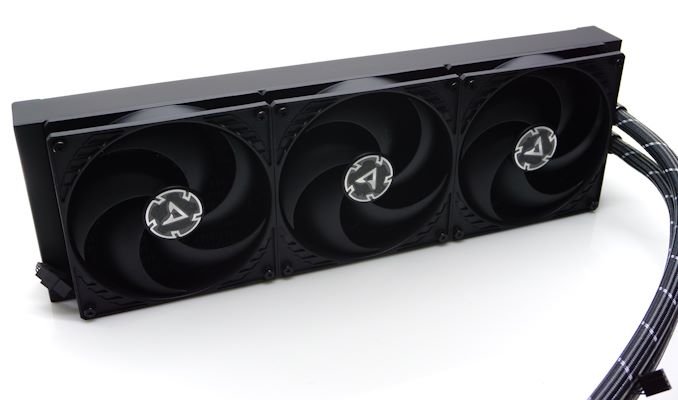
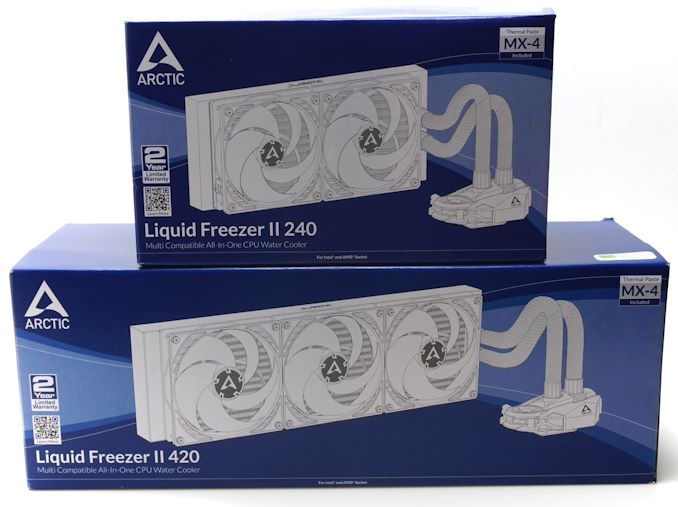
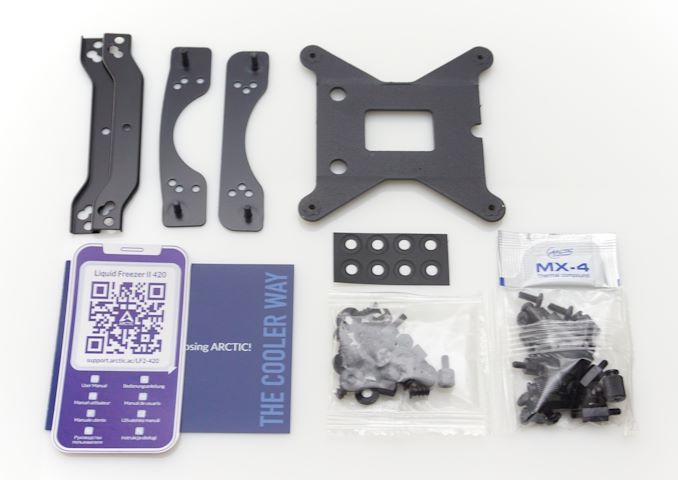
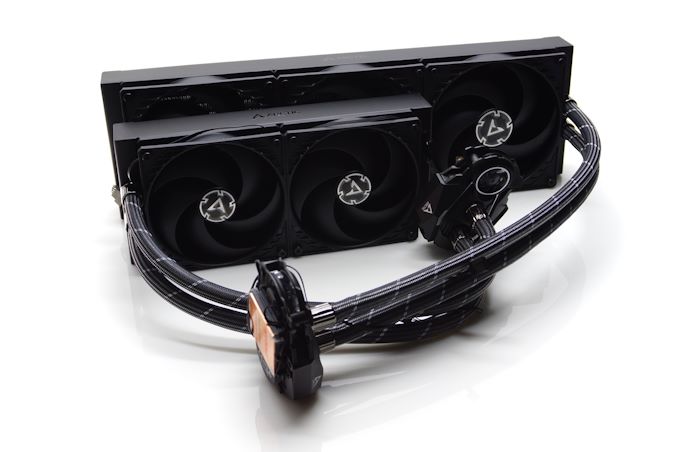
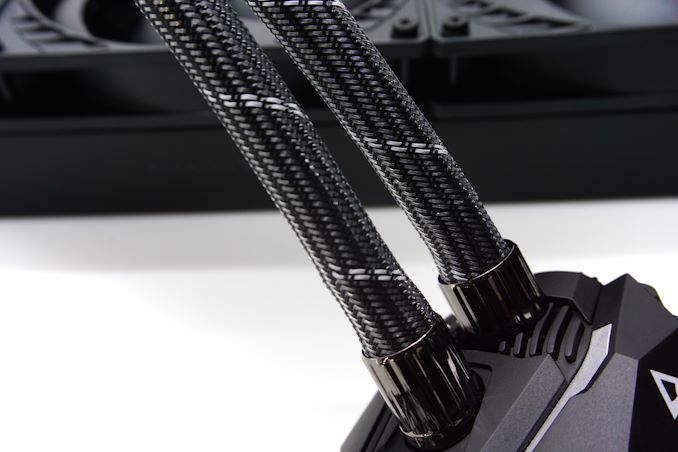
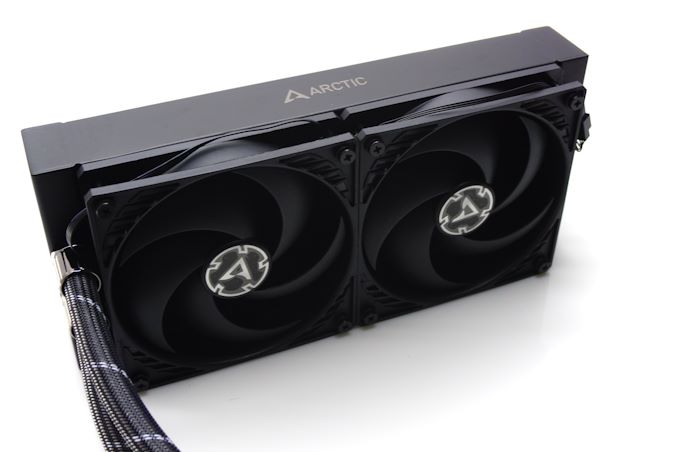
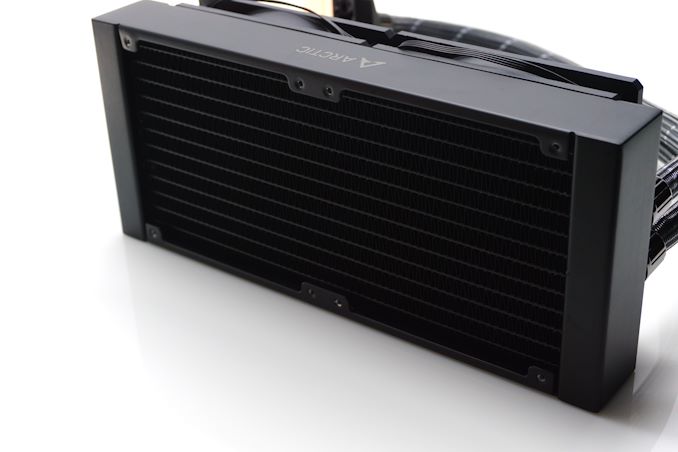
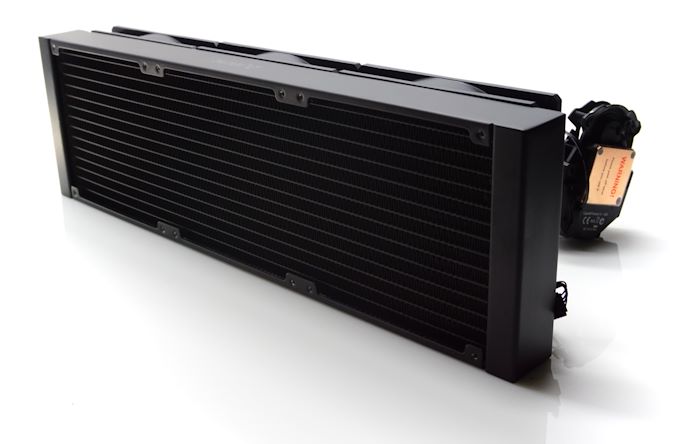
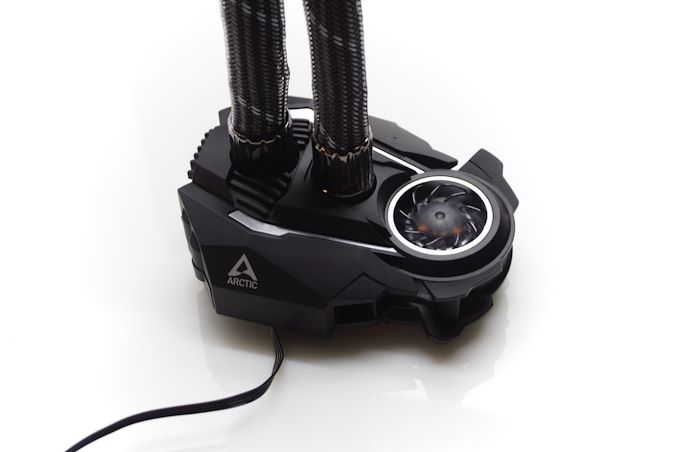
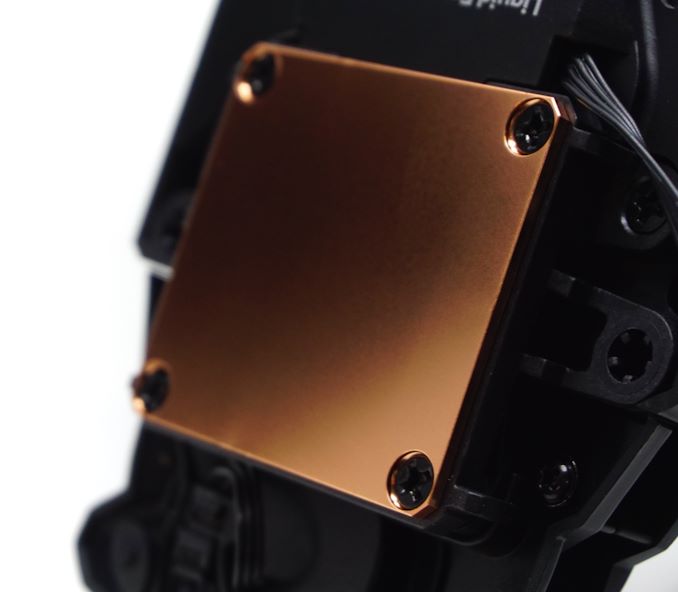








44 Comments
View All Comments
BattleRam - Friday, January 15, 2021 - link
Is this compatible with TRx40 AMD cpu's?evilspoons - Friday, January 15, 2021 - link
On the first page:"It is large enough for most commercial processors but will not cover a ThreadRipper processor, for which the Freezer II coolers have no stock support for out of the box."
WarWolverine - Friday, January 15, 2021 - link
I was looking for 360mm because it was $120 for amazon a week or 2 ago but now they are sold out. But yesterday 420mm was available off amazon for $160 so I grabbed that. Hopefully it'll fit into my Phanteks Pro. Replacing Deepcool Captain 360 from 2017. Kinda an overkill for a 5600x. With Deepcool I'm getting 73C and lots of throttling 5600x @ 4.85Ghz (kryonaut thermal paste).Holliday75 - Friday, January 15, 2021 - link
Yeah the 360's are hard to find. I got lucky and picked one off of Amazon at MSRP a few weeks back.schujj07 - Friday, January 15, 2021 - link
In reality all of the Liquid Freezer IIs are hard to find. When you do find them, typically they are selling for over MSRP.nils_ - Saturday, January 16, 2021 - link
I couldn't find the 420 version in Germany, the 360 was available however. Might just upgrade later.Makaveli - Saturday, January 16, 2021 - link
lol kinda overkill a 420mm on a 6 core 5600x 65watt tdp chip indeed.WarWolverine - Sunday, January 17, 2021 - link
Update: the 420 cooler came in. It took me over an hour to put in. It almost didn't fit. CPU power was in the way, I had to force it a few millimeters out of the way. I ran 3D mark time spy like I did with 360 Captain and I got 70C vs 73C. Mobo fan curve is set to Performance. It does improve cooling and it takes longer to heat up but it does heat up. I did a stress test with cpu z for a few minutes and it did heat up to 72C. I am OCing 5600x to 4850 with PBO 2. Undervolt curve on 4 cores at - 15 and 2 best cores at - 5. I'm kind of disappointed that the best cooler I can get only delays the heat and not keep the the CPU under 70C. Maybe if I manually OC it will have lower temps. Maybe I didn't put enough kryonut thermal paste. I'll try to re-do it later. I will try to replace the fans with NH U12A 3000rpm fans later.TheWereCat - Sunday, January 17, 2021 - link
I was able to get the 360mm for €90. I replaced the NH-U12A which was the same price. Now I get about 20°C less at also lower noise... 3900X CPU.Showtime - Friday, January 15, 2021 - link
Surprising that it has become a thickness race already. You still get to claim top performance at x dimensions with a caveat (that it won't fit lol). Thinner fans could help, but that will cost more, and be louder.